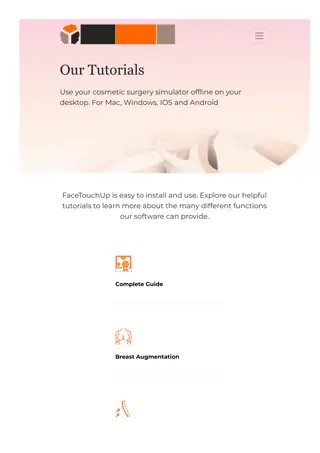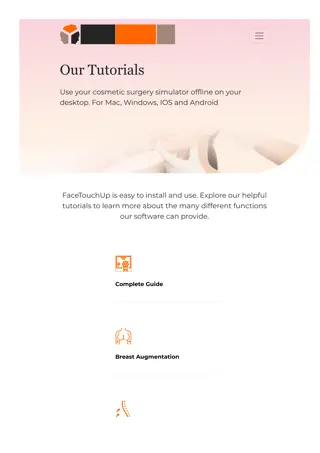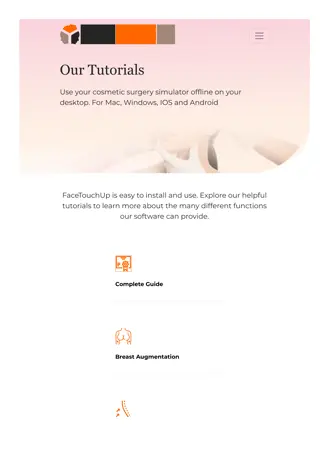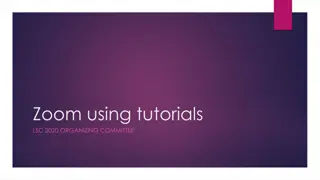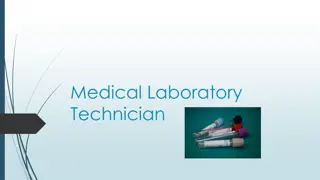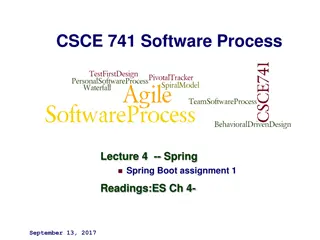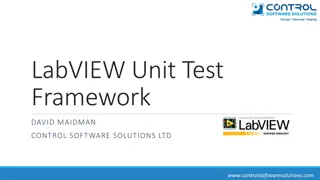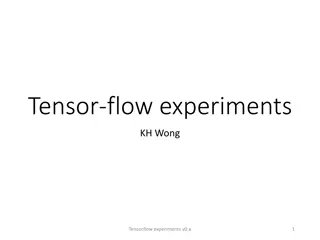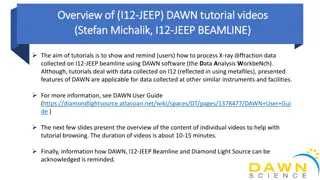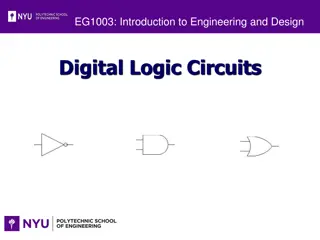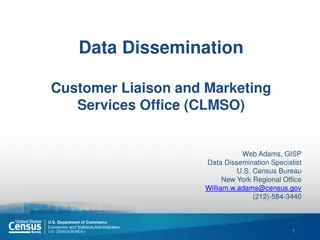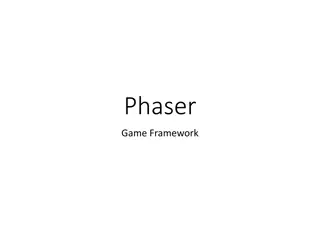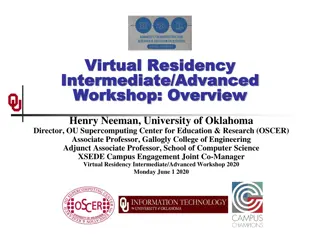Advanced LabVIEW Workshop Tutorials
This workshop tutorial series delves into the intricacies of customizing the LabVIEW dashboard for optimized performance. Learn how to send data from robots to the Smart Dashboard VI, explore sensor functionalities like encoders and potentiometers, and understand the various applications and controls associated with each sensor type. Enhance your LabVIEW skills and take your robotics projects to the next level with these comprehensive tutorials.
Download Presentation

Please find below an Image/Link to download the presentation.
The content on the website is provided AS IS for your information and personal use only. It may not be sold, licensed, or shared on other websites without obtaining consent from the author.If you encounter any issues during the download, it is possible that the publisher has removed the file from their server.
You are allowed to download the files provided on this website for personal or commercial use, subject to the condition that they are used lawfully. All files are the property of their respective owners.
The content on the website is provided AS IS for your information and personal use only. It may not be sold, licensed, or shared on other websites without obtaining consent from the author.
E N D
Presentation Transcript
Advanced LabViEW http://workshop.frclabviewtutorials.com
Customizing the Dashboard Open Project
Customizing the Dashboard Open Project Sending data from robot
Customizing the Dashboard Open Project Sending data from robot Smart Dashboard VI s Named (case sensitive) values
Sensors - Encoder Places to use encoders: When trying to measure rotational speed Trying to measure rotational distances possibly greater than 8 rotations. Don t care about starting position
Sensors - Encoder Places to use encoders: When trying to measure rotation speed Trying to measure rotational distances possibly greater than 8 rotations. Don t care about starting position Examples: Drive train Fly Wheel/wheeled shooter
Sensors - Encoder Reading
Sensors - Encoder Control
Sensors - Potentiometer Places to use potentiometers: Trying to measure rotational distances less than 8 rotations. Care about starting position or absolute positions Examples: Arm angles Elevator positions
Sensors - Potentiometer Control
Sensors - Potentiometer Note: Easy way to make potentiometer relative to a known point: https://www.frclabviewtutorials.com/tutorials/sensors/roborio/pot entiometer/
Sensors - Gyro Places to use a Gyro: When trying to drive perfectly straight When trying to turn to specific angles (especially in auto)
Sensors - Gyro Control
PID Proportional
PID Proportional Constant multiplied by error (offset) The larger this is, the faster the robot approaches the setpoint (smaller rise time)
PID Proportional Constant multiplied by error (offset) The larger this is, the faster the robot approaches the setpoint (smaller rise time) Integral Constant multiplied by integral of all previous error values The larger this is, the less overshoot and settling time (less bounce)
PID Proportional Constant multiplied by error (offset) The larger this is, the faster the robot approaches the setpoint (smaller rise time) Integral Constant multiplied by integral of all previous error values The larger this is, the less overshoot and settling time (less bounce) Differential Used to eliminate steady state error (reducing offset after movement)
PID Proportional Constant multiplied by error (offset) The larger this is, the faster the robot approaches the setpoint (smaller rise time) Integral Constant multiplied by integral of all previous error values The larger this is, the less overshoot and settling time (less bounce) Differential Used to eliminate steady state error (reducing offset after movement)
PID Tuning
PID Tuning Several methods available Ziegler Nichols* Tyreus Luyben Cohen Coon str m-H gglund Manual Tuning*
PID Tuning Manuel Raise CPUntil robot oscillates about setpoint Raise CDUntil Robot stops bouncing Raise CI(and change the setpoint) until robot turns and hits the target point Ziegler-Nichols Raise CPUntil robot oscillates (Value of CPbecomes Ku) Measure the period of this oscillation (Time to complete 1 cycle becomes TU)
PID Tuning Manuel Raise CPUntil robot oscillates about setpoint Raise CDUntil Robot stops bouncing Raise CI(and change the setpoint) until robot turns and hits the target point Ziegler-Nichols Raise CPUntil robot oscillates (Value of CPbecomes Ku) Measure the period of this oscillation (Time to complete 1 cycle becomes TU)
PID Tuning Manuel Raise CPUntil robot oscillates about setpoint Raise CDUntil Robot stops bouncing Raise CI(and change the setpoint) until robot turns and hits the target point Ziegler-Nichols Raise CPUntil robot oscillates (Value of CPbecomes Ku) Measure the period of this oscillation (Time to complete 1 cycle becomes TU)
PID Demo
Architectures State Machine
Architectures State Machine
Architectures State Machine
Architectures State Machine Producer-Consumer Parallel loops First creating data or instructions Other handling
Architectures State Machine Producer-Consumer Parallel loops Use either queue or fgv
Type Def. Useful for passing data both controls and indicators Demo
Type Def. Useful for passing data both controls and indicators Demo



